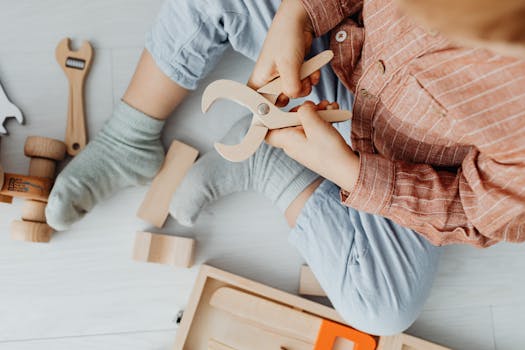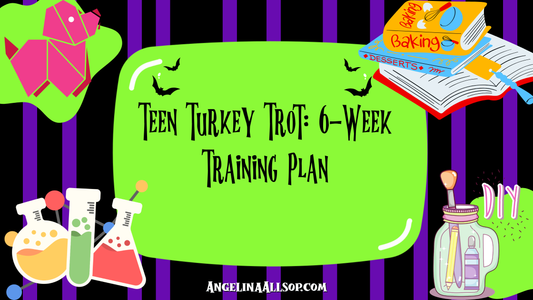As an affiliate, I earn from qualifying purchases, but this doesn't affect the reviews or recommendations—your trust is important to me!
Create Your Own DIY Paper Mache Volcano Experiment at Home

Today, We're Making:
- - DIY Paper Mache Volcano Experiment
- - 1. DIY Solar System Mobile: On 4-2-2025
- - Facilitate an exploration of our solar system by building a DIY solar system mobile. Kids can understand more about the planets' positions,their relative sizes and distances from the Sun.
- - This project would require some foam balls of different sizes,paint,string.
Transform Your Kitchen Table Into a Learning Lab with a DIY Paper Mache Volcano Experiment
Imagine transforming your kitchen table into an exciting hands-on learning laboratory, where creativity and knowledge fuse and fizzle in the form of a DIY Paper Mache Volcano Experiment. From the initial crafting of the paper mache volcano to the final eruption, this captivating indoor learning activity is the perfect engaging STEM activity that combines fun education and art and science project.
So, whether you're a parent looking to orchestrate a productive afternoon or a teacher searching for an interactive way for kids to learn about volcanoes, this DIY volcano project offers a unique blend of artistry, imagination, and natural science that you and your young learners will absolutely love. Let's dive in and bring geology to life!
Create Your Homemade Volcano: Crafting the Base
Creating a DIY Paper Mache Volcano doesn’t mean your kitchen will turn into a fire-and-brimstone landscape. Instead, it's a wonderfully mess-free, engaging activity that allows kids to embrace both their crafty and scientific sides.
The first step in creating your volcano model is developing the base or the 'mountain.' Think of a mountain range you might have seen images of, and try to mimic that. Everything starts with the humble newspaper; tear it into strips and crumple some into balls. These will provide the structure when you create a volcano, propping up the shape. Cover a flat surface (like a tray or a deep baking sheet) with these crumpled balls of paper, arranging them in the shape of a mountain with a hollow centre for dramatic effect. Now it’s time to get your hands a little messy with the paper mache mixture.
Turning Trash Into a Mountain with Recycling Crafts
If you're worried about the environmental impact of creating a paper mache volcano, fear not. This DIY project for kids also serves as an excellent way to teach about recycling crafts. We recommend using old newspapers, junk mail or scrap paper to create your exploding fun education masterpiece.
Pour flour and water into a bowl (one part flour to two parts water should do the trick), and stir until smooth. Dip the strips of paper in this gooey concoction and layer them over your crumpled paper mountain. Apply three to four layers and let your masterpiece dry overnight, resulting in a solid base for your homemade volcano. Reiterating the importance of recycling to your children at this stage contributes to an at-home science lesson in environmental responsibility.
Bringing the Drama: The Volcanic Eruption Experiment
The real excitement begins when it’s time for the eruption. Every DIY Volcano Experiment might end with a bang, but the journey to get there is just as exciting. Here’s where the learning at home becomes truly energetic, engaging and memorable.
In the hollow heart of your paper mache mountain, add a small container. A short plastic cup or a film canister works perfectly. Ensure that the container is firmly nestled into the mountain, but the top open for your explosive ingredients to be poured in.
For the eruption, you’ll need baking soda, dish soap, and vinegar. Add two tablespoons of baking soda to the container, followed by a squeeze of dish soap (this makes the 'lava' frothy and more visually exciting). When it’s finally time to trigger the eruption, pour vinegar into the opening. Stand back and watch your science experiment at home come alive.

Your DIY Paper Mache Volcano Experiment
And there you have it! Your very own DIY Paper Mache Volcano Experiment, a refreshing twist on learning at home that brings the captivating world of geology right into your kitchen.
Explodes with Knowledge, Laughter, and a Dash of Creative Mess
As your higher learning mountain explodes with knowledge, laughter and a dash of creative mess, the volcano will serve as an unforgettable memory, a tangible testament to the fusion of art, science, and fun that education can be.
The Exciting Journey
The next time your young learners look at a mountain or read about natural disasters, they'll recall this exciting journey of crafting their own volcano and the clever science behind it. Remember, the best lessons leave impressions lasting far beyond the classroom, and this exciting DIY project does just that.
Let Your Learning Erupt!
So, get started, embrace the excitement and let your learning erupt! Now who said science lessons couldn't be a blast?

You May Also Like These:
DIY Solar System Mobile
Date: 4-2-2025
Ingredients:
Here is the list of all the items you will need to make your DIY Solar System Mobile.
- 9 lightweight balls of different sizes (for solar system planets)
- Acrylic paints
- Paintbrushes
- Fishing wire
- Hanging dowel
- Screws and screwdriver
- Hole punch
Instructions:
Follow these steps to create your Solar System Mobile:
- Select your balls:Select 9 balls of different sizes to represent the solar system's planets.
- Paint your planets:Paint each ball to resemble the planets in the solar system. Remember to paint them according to their real color.
- Dry the planets:Let the balls (planets) dry.
- Punch holes:Once the balls are completely dry, use a hole punch to create a small hole on top of each planet.
- Attach the fishing wire:Through the hole of each planet, thread the fishing wire and secure it well.
- Prepare the dowel:Attach several pieces of hanging fishing wire to the dowel.
- Hang your planets:Attach each planet to its allotted place on the dowel using the fishing wire. Make sure they're in the right order and spaced out properly.
- Secure the mobile:Attach the dowel to the ceiling using screws and make sure it is secure.
Your DIY Solar System Mobile is ready! Hang it in a prominent place where your child can see it every day and learn about the solar system in a fun and creative way.
Solar System STEM Project: Relative Sizes & Distances from the Sun
Materials Needed
- Foam balls of different sizes
- Acrylic paint in various colors
- Paint brushes
- Meter stick or measuring tape
- Permanent marker
- Outdoor space for layout
Instructions
Step 1: Paint the Planets
Using the acrylic paint and brushes, paint each foam ball to resemble the different planets. Use the largest ball for the sun. Allow the paint to dry thoroughly before moving on to the next step.
Step 2: Mark the Distances
Use the meter stick or measuring tape and the permanent marker to mark out the relative distances of each planet from the sun on the ground of your outdoor space. You can use a scaled distance in order to fit within your available space. Remember, the furthest planet, Neptune, should be the furthest mark from your Sun.
Step 3: Place the Planets
Place each painted foam ball on its corresponding mark, representing its distance from the Sun.
Step 4: Review and Learn
Take a step back and look at the scaled Solar System you've created. This is a great opportunity to discuss with your child the relative sizes and distances of the planets from the Sun. Even see if they can name all the planets!
Note: Always remember safety first. Younger children should be supervised at all times during this project.
Ingredients:
- 1 very large foam ball (for Sun)
- 8 smaller foam balls in varying sizes (for the planets)
- Long piece of string or yardstick
- Acrylic paint (varied colors)
- Paint brushes
- Permanent markers
Instructions:
- Paint the large foam ball yellow: This ball represents the Sun in your solar system model.
- Paint the smaller foam balls: Each of these balls represents a planet in the solar system. You can decide which ball represents which planet based on their sizes.
- Label each planet: Use your markers to write the name of each planet on the appropriate foam ball once the paint has dried.
- Measure the correct distances: Using your string or yardstick, measure the correct distances from the Sun for each planet and mark them on the string or yardstick. This will give you an accurate scale model of our solar system.
- Set your planets out on their paths around the Sun: Place the foam ball representing the Sun at one end of the string or yardstick, and place each planet at its respective marked point. Now, you have created a scale model of our solar system!
STEM Project Instructions: Creating Invisible Ink
Learn how to write secret messages to friends and discover how different substances react under heat. This project combines art, science and a bit of magic!
Ingredients
- 1 Lemon
- Water
- White paper
- Cotton swab or Paint brush
- Iron or 100-watt light bulb
Instructions
- Squeeze the lemon into a bowl and add a few drops of water.
- Stir the mixture with your paintbrush or cotton swab.
- Dip your paintbrush or cotton swab into the lemon juice mixture. Write your secret message on the white paper. Let it dry completely.
- To read the message, heat the paper by the iron or the 100-watt bulb. The lemon juice will start to oxidize, reveal the message.
Be Safe!
Always have an adult present when using the iron or light bulb to heat the paper and reveal your secret message. Ensure all materials are disposed of in a environmentally-friendly manner.
String STEM Project: Making a String Telephone
Ingredients:- 2 Clean, empty yogurt cups or similar containers
- 1 10-foot length of string, kite string works well
- 1 Small, sharp object to make a hole – like a skewer or small screwdriver
Step 1:
Using your small, sharp object, make a hole in the bottom of each yogurt cup. Be careful not to split the plastic!
Step 2:
Thread one end of the string through the hole in the first yogurt cup. Pull it through a bit.
Step 3:
- Make a large knot (or two) in the string to secure it in place. The knot should be big enough that it won’t pull back out through the hole.
- Pull the string back up until the knot reaches the inside of the cup.
Step 4:
Repeat with the hole in the other yogurt cup and the second end of the string. You will now have a yogurt cup on either end of a long length of string.
Step 5:
- Test your telephone. Stand far enough apart so that the string is completely straight and taut.
- One person places their ear to their cup while the other speaks into theirs.
- Can you hear each other? If yes, congratulations! You’ve built a working string telephone!
NOTE: String telephones only work if the string is taut. If it sags in the middle, the vibrations that carry the sound won’t transfer well.





































